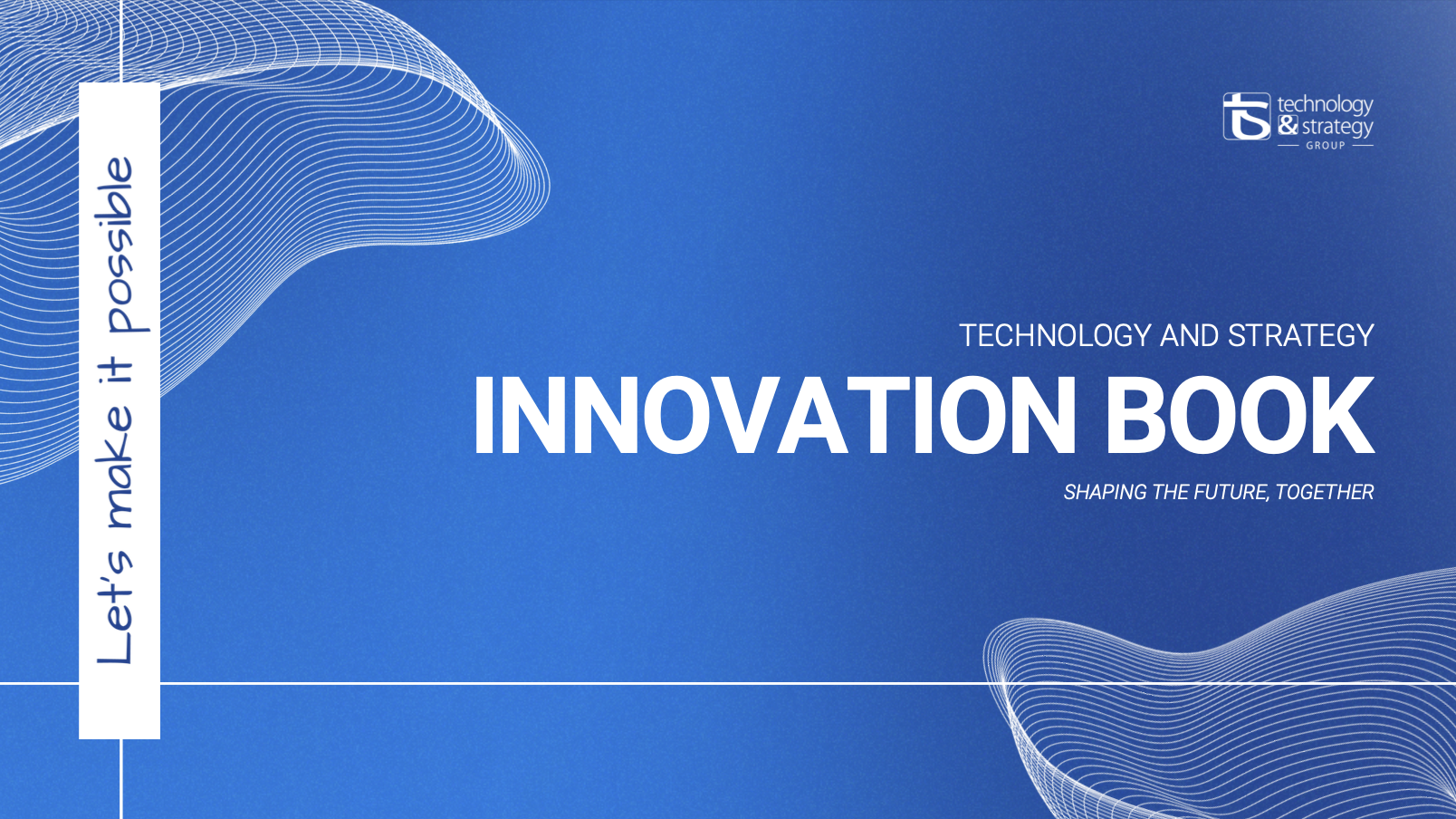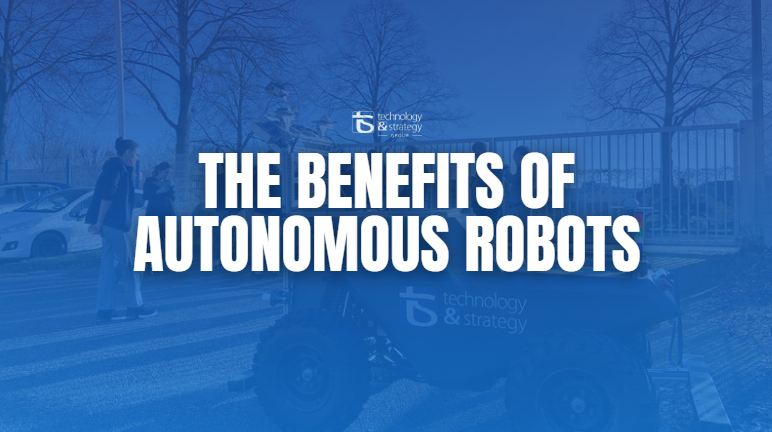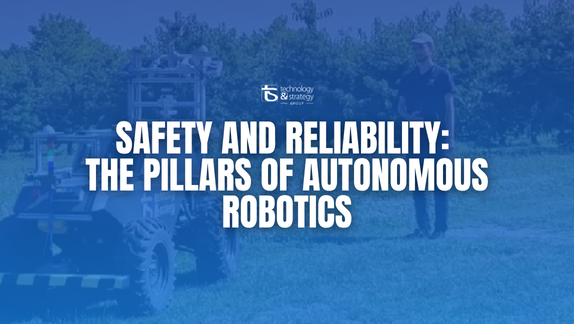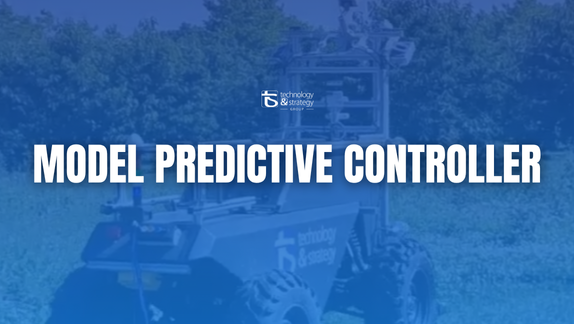A single unauthorized access event can cost industrial organizations upwards of $750,000 in damages, according to the latest Industrial Security Association report. What's more concerning is that 78% of manufacturing facilities still rely on legacy access control systems that fail to address the convergence of physical and cyber threats in modern OT environments.
This disconnect between evolving threats and outdated protection mechanisms represents one of the most significant security vulnerabilities in critical industrial infrastructure today.
Understanding Modern Industrial Access Control
Evolution from Physical to Cyber-Physical Security
The industrial access control landscape has undergone a profound transformation over the past decade. Traditional physical security measures—locks, keys, and guards—have evolved into sophisticated cyber-physical systems that manage both physical entry and digital access to critical operational technology (OT) networks.
This evolution hasn't been merely technological but represents a fundamental shift in security paradigms. Industrial environments now require a holistic approach where physical and logical access are viewed as interconnected components of a unified security architecture.
"A bureau d'études should not be a simple technical support, but an active player in the strategic development of the enterprise. We've seen this philosophy drive success in access control implementations where technology teams actively contribute to security strategy rather than simply executing requirements."
- Security Implementation Expert at T&S
For example, in automotive manufacturing facilities, the same credential that grants an engineer physical access to a production line also determines their authorization level to modify programmable logic controllers (PLCs) and other critical control systems.
Converging IT/OT Security Frameworks
The convergence of Information Technology (IT) and Operational Technology (OT) presents unique challenges for access control in industrial environments. Unlike IT-centric enterprises where confidentiality often takes precedence, industrial systems prioritize availability and integrity—downtime or data corruption can lead to catastrophic consequences.
This fundamental difference requires specialized security frameworks that accommodate both IT and OT requirements. Standard IT security protocols like NIST and ISO 27001 must be adapted to incorporate industrial standards such as IEC 62443 (formerly ISA-99) and NERC CIP for critical infrastructure.
In our implementation experience across multiple industries, successful convergence depends on:
- Cross-functional governance committees with both IT and OT representation
- Unified access management policies that respect operational constraints
- Risk assessment methodologies adapted for industrial contexts
- Authentication systems designed for challenging industrial environments
- Segmentation strategies that protect critical OT systems while enabling necessary access
A recent project for an energy sector client demonstrates this approach in action. By creating a unified access framework that spanned both corporate IT and critical OT systems, we reduced unauthorized access attempts by 94% while maintaining operational efficiency and meeting strict regulatory requirements.
Key Components of Industrial Access Control Infrastructure
Hardware Elements (Controllers, Readers, Credentials)
The hardware foundation of industrial access control systems must be engineered to withstand challenging environments while delivering uncompromising security. Key components include:
- Controllers: Industrial-grade controllers with redundancy features, extended temperature ranges, and environmental protection (typically IP65 or higher) form the backbone of robust access systems
- Readers: Multi-technology readers capable of supporting multiple credential formats simultaneously have become standard in industrial deployments
- Credentials: The evolution of credentials has accelerated dramatically, moving from traditional proximity cards to smart cards with cryptographic capabilities
- Electronic Locking Hardware: Industrial environments demand specialized locking mechanisms, including explosion-proof variants for hazardous locations
For harsh environments, readers must withstand extreme temperatures, vibration, dust, and chemical exposure. RFID technologies operating at 13.56 MHz (HID iCLASS, MIFARE DESFire) have largely replaced legacy 125 kHz technologies due to their superior security capabilities.
Software Systems (Management, Integration, Analytics)
The software layer of modern access control infrastructure has evolved far beyond simple door scheduling to become a sophisticated security management platform:
- Access Management Platforms: Enterprise-grade software with role-based permissions, audit trails, and customizable workflows
- Integration Middleware: Purpose-built middleware facilitates seamless communication between access control systems and industrial control systems
- Analytics Engines: Advanced analytics using machine learning algorithms can detect anomalous access patterns
- Disaster Recovery Systems: Industrial access control requires robust disaster recovery capabilities to ensure continuous operation during emergencies
In one manufacturing implementation, our analytics solution identified unauthorized access attempts disguised as routine maintenance activities that had evaded traditional rule-based detection.
Critical Access Control Technologies for Industrial Environments
Multi-Factor Authentication Solutions
Multi-factor authentication (MFA) has become essential for industrial environments where security requirements are increasingly stringent. The principle of requiring multiple verification methods—something you have (card/token), something you know (PIN/password), and something you are (biometrics)—provides significantly stronger protection than single-factor approaches.
For industrial implementations, MFA must be adapted to operational realities:
- Environmental Considerations: Authentication methods must function reliably in challenging conditions including noise, vibration, and potential contamination
- Operational Efficiency: Authentication speed is critical in high-throughput industrial environments
- Offline Authentication: Industrial MFA systems must maintain security even during network outages
In a recent aerospace manufacturing facility implementation, our three-factor authentication solution reduced unauthorized access incidents by 99.7% while adding only 2.8 seconds to the average entry process—demonstrating that high security need not compromise operational efficiency.
Biometric Systems in High-Security Operations
Biometric authentication has gained significant traction in industrial environments due to its ability to verify identity with high confidence while eliminating credential sharing issues. However, effective implementation requires careful consideration of industrial-specific challenges.
Industrial biometric readers must withstand harsh conditions. For example, fingerprint readers in manufacturing environments often incorporate self-cleaning surfaces, redundant sensors, and algorithms optimized for partially obscured prints due to dirt or minor injuries.
| Technology | Industrial Suitability | Authentication Speed | Environmental Resistance |
|---|---|---|---|
| Fingerprint | High with specialized readers | < 1 second | Good with protective coatings |
| Iris Recognition | Excellent for clean areas | 1-2 seconds | Very high |
| Facial Recognition | Good with AI enhancement | < 0.8 seconds | Moderate to high |
| Vein Pattern | Excellent for gloved environments | 1-3 seconds | Excellent |
For a pharmaceutical manufacturing client, we implemented a hybrid biometric system combining vascular pattern recognition for clean room environments (where gloves prevent fingerprint verification) with facial recognition for general facility access, resulting in 100% accurate authentication while maintaining strict GMP compliance.
Mobile Credentials and Contactless Technologies
The adoption of mobile credentials in industrial environments represents one of the most significant access control trends of the past five years. Smartphones as authentication devices offer substantial advantages:
- Dynamic Security: Unlike physical cards, mobile credentials can be updated remotely, enabling real-time security adjustments
- Multi-layered Protection: Modern mobile credential implementations leverage device-level security, application-level controls, and communication-level protections
- Operational Benefits: Simplified credential issuance and management dramatically reduces administrative overhead
- Contextual Authentication: Smartphones enable contextual security policies that consider location, time, device health, and network conditions
However, industrial implementations must address specific challenges including hazardous area certifications (intrinsic safety), battery life considerations, and fallback mechanisms for device failure.
Role-Based Access Control Implementation
Role-Based Access Control (RBAC) forms the logical foundation of modern industrial access management, but its effective implementation requires careful engineering beyond standard IT approaches. Industrial RBAC must accommodate:
- Dynamic Operational Roles: Personnel in industrial environments often perform multiple functions with different security requirements
- Temporal and Conditional Access: Access rights frequently depend on operational states, maintenance schedules, and production requirements
- Granular Zone Control: Industrial facilities require highly granular security zones based on safety considerations and regulatory requirements
- Contractor and Visitor Management: External personnel require specialized handling within the RBAC framework
A major automotive manufacturer's implementation demonstrates these principles in practice. Their RBAC system integrates with production scheduling systems to automatically adjust access permissions based on production status, enabling maintenance teams to access equipment only during approved maintenance windows.
Industry-Specific Access Control Requirements
Automotive Manufacturing Security Standards
The automotive industry faces unique access control challenges due to high-value intellectual property, complex supply chains, and increasingly connected manufacturing processes. Industry-specific standards and requirements include:
- TISAX Compliance: The Trusted Information Security Assessment Exchange has become the de facto security standard for the automotive industry
- Production Line Protection: Modern automotive manufacturing involves highly automated production systems where unauthorized access could impact product quality or safety
- Supplier Integration: Automotive manufacturing involves complex supplier relationships requiring secure but efficient access for external partners
- Vehicle Development Security: Prototype vehicle development areas require extraordinary protection against industrial espionage
In a recent implementation for a European automotive manufacturer, we designed a comprehensive access framework that reduced security incidents by 87% while improving operational efficiency through streamlined contractor management and automated compliance reporting.
Energy and Utilities Critical Infrastructure Protection
Energy and utilities sectors face stringent regulatory requirements and significant threat actors targeting critical infrastructure:
- NERC CIP Compliance: North American utilities must comply with Critical Infrastructure Protection standards that mandate specific access control measures
- Physical-Cyber Protection: Substations, generation facilities, and control centers require integrated protection of both physical assets and operational technology systems
- Remote Site Security: Unmanned facilities present unique challenges requiring robust remote access management and tamper detection
- Attack Surface Reduction: Energy sector access control must minimize potential attack vectors through network segmentation and least privilege access
Our work with a major European energy provider demonstrates the effectiveness of integrated approaches. By implementing a unified access framework spanning 147 facilities, they achieved full regulatory compliance while reducing security administration costs by 42%.
Aerospace and Defense Compliance Frameworks
The aerospace and defense sectors operate under exceptionally strict security requirements driven by national security concerns and export control regulations:
- ITAR/EAR Compliance: International Traffic in Arms Regulations and Export Administration Regulations impose strict controls on access to controlled technical data
- Personnel Security Requirements: Defense contractors typically implement access controls aligned with national security clearance frameworks
- Classified Area Protection: Facilities housing classified programs require specialized access controls including SCIF compliant systems
- Supply Chain Security: The CMMC framework imposes new requirements on defense industrial base organizations
Medical and Pharmaceutical Access Governance
Medical and pharmaceutical manufacturing facilities face unique challenges balancing security requirements with strict quality and contamination controls:
- FDA and GMP Compliance: Access control systems must support Good Manufacturing Practice requirements including contamination prevention
- Clean Room Considerations: Biometric and card-based access technologies must be adapted for clean room environments
- Research Security: Pharmaceutical R&D facilities require exceptional protection for intellectual property
- Data Integrity Protection: Access control for systems managing regulated data must comply with 21 CFR Part 11 requirements
In a recent implementation for a European pharmaceutical manufacturer, we designed an integrated access solution that maintained ISO Class 5 clean room compatibility while enforcing strict segregation between production stages.
System Integration Challenges and Solutions
Integrating Access Control with Industrial Control Systems
The integration of access control with industrial control systems (ICS) represents one of the most challenging aspects of modern industrial security implementation. Critical considerations include:
- Security Architecture: Integration must follow zero-trust principles with appropriate network segmentation and defense-in-depth strategies
- Protocol Adaptation: Industrial protocols (Modbus, PROFINET, EtherNet/IP) must be securely bridged to IT-oriented access control systems
- State-Based Access Control: Advanced implementations incorporate real-time operational states from ICS to dynamically adjust access permissions
- Safety System Interaction: Access control must coordinate with safety systems to ensure emergency response capabilities
"In our Hardware Lab, we specialize in testing and validation of motors, including motor electronics, and sensor calibration integrated into pre-developed power tools. Our expertise extends to developing power electronic interfaces and HMI designed to drive BLDC motors providing torque between 50 N·m and 300 N·m. This hands-on experience with industrial systems informs our approach to access control integration."
- Hardware Engineering Expert at T&S
Building Management System Connectivity
The integration of access control with Building Management Systems (BMS) creates opportunities for operational efficiency while presenting technical challenges:
- Protocol Harmonization: Modern BMS implementations use various protocols including BACnet, LonWorks, and Modbus
- Coordinated Responses: Integrated systems enable sophisticated responses to security events, such as HVAC adjustments during containment situations
- Energy Optimization: Advanced implementations use occupancy data from access control systems to optimize HVAC and lighting operation
- Fire System Integration: Access control must interface with fire detection and suppression systems
For an aerospace manufacturing facility, our integrated BMS/access control solution reduced energy costs by 23% while improving security incident response times by 67% through automated building-wide responses to security events.
Enterprise IT System Synchronization
Synchronizing access control systems with enterprise IT infrastructure eliminates redundant administration while improving security posture. Key benefits include connecting access control to enterprise Identity and Access Management (IAM) systems, creating a single source of truth for identity data.
Advanced implementations verify training and certification requirements before granting access to specialized areas or equipment, pulling data directly from learning management systems and certification databases.
Video Surveillance and Intrusion Detection Integration
The integration of access control with video surveillance and intrusion detection creates powerful security capabilities beyond what standalone systems can achieve:
- Event Correlation: Unified security platforms correlate access events with video data and intrusion detection inputs
- Video Analytics Enhancement: Access data provides context that improves the accuracy of video analytics
- Centralized Command and Control: Integrated security management platforms provide unified interfaces for security operations
- Forensic Investigation Tools: Advanced implementations maintain synchronized timelines across all security systems
Cybersecurity Considerations for Modern Access Systems
Threat Modeling for Physical Access Control Systems
Effective cybersecurity for access control begins with comprehensive threat modeling that addresses the unique characteristics of physical security systems:
- Attack Surface Analysis: Modern access control systems present diverse attack surfaces including credentials, readers, controllers, servers, networks, and applications
- Threat Actor Profiling: Industrial facilities face threats ranging from opportunistic criminals to nation-state actors and insider threats
- Attack Path Mapping: Sophisticated threat modeling identifies potential attack paths through the system
- Impact Assessment: Security controls must be proportionate to potential impacts, which may include safety risks and production disruption
Our threat modeling methodology for industrial access control incorporates both IT security frameworks (STRIDE, PASTA) and industrial security considerations (IEC 62443 threat categories), creating a comprehensive view of security risks and appropriate mitigations.
Network Segmentation Best Practices
Network segmentation forms a critical defense layer for access control systems, particularly in industrial environments where operational technology networks require strict protection. Following IEC 62443 principles, access control networks should be divided into security zones with controlled communication paths between zones.
Advanced implementations employ micro-segmentation techniques to isolate individual controllers or controller groups, limiting lateral movement in case of compromise. For highest security applications, unidirectional communication technologies enforce strict information flow control between security domains.
Encryption and Secure Communication Protocols
Encryption protects access control data both in transit and at rest, preventing unauthorized disclosure and tampering:
- End-to-End Encryption: Modern access control systems should implement encryption at all communication layers
- Strong Cryptographic Standards: Industrial implementations should use current encryption standards (AES-256, RSA-2048 or better)
- Secure Protocol Selection: Legacy protocols like Wiegand should be replaced with secure alternatives such as OSDP with encryption
- Certificate Management: Enterprise-scale implementations require robust certificate lifecycle management
Vulnerability Management for Access Infrastructure
Access control systems require specialized vulnerability management practices adapted to their operational requirements. Testing must accommodate the operational sensitivity of access systems, often requiring phased approaches that minimize disruption while verifying security controls.
For a pharmaceutical manufacturing facility, we implemented a comprehensive vulnerability management program that achieved 99.7% security patch compliance while maintaining system availability through carefully orchestrated testing and deployment processes.
Implementing Resilient Access Control Solutions
Risk Assessment Methodologies
Effective access control implementation begins with structured risk assessment tailored to industrial environments. Modern methodologies evaluate specific threats against identified assets, considering both likelihood and potential impact to prioritize security investments.
Comprehensive assessment incorporates applicable regulatory frameworks (NERC CIP, FDA GMP, ITAR, etc.) with specific control requirements mapped to implementation elements. Risk assessment must consider operational requirements including availability needs, performance constraints, and environmental conditions.
System Architecture Design Principles
Resilient access control architectures incorporate several key design principles:
- Defense in Depth: Multiple security layers provide protection even if individual controls fail
- Fail-Secure/Fail-Safe Balance: Architecture must balance security requirements with safety and operational needs
- Redundancy and High Availability: Critical components require appropriate redundancy with automatic failover capabilities
- Scalability and Adaptability: Architecture should accommodate future expansion and technology evolution
Deployment and Commissioning Strategies
Successful deployment of industrial access control requires specialized implementation approaches. Industrial environments typically require phased approaches that maintain security during transition periods, which may include parallel operation of legacy and new systems with appropriate bridge technologies.
Critical components should undergo comprehensive Factory Acceptance Testing in controlled environments before field deployment, verifying functionality, performance, and security under simulated operational conditions.
Testing and Validation Protocols
Comprehensive testing ensures access control systems meet both security and operational requirements:
- Functional Testing: Validates that all system functions perform as specified under normal operating conditions
- Performance Testing: Verifies system performance under expected load conditions
- Security Testing: Includes vulnerability assessment, penetration testing, and security control validation
- Failover Testing: Confirms system behavior during various failure scenarios
- Usability Testing: Evaluates human factors including credential presentation ergonomics and administration interface usability
Future-Proofing Industrial Access Control
AI and Machine Learning Applications
Artificial intelligence and machine learning are transforming industrial access control through advanced capabilities. Machine learning algorithms identify unusual access patterns that may indicate security threats, detecting subtle anomalies that rule-based systems would miss.
Advanced authentication systems analyze behavioral characteristics like gait patterns, interaction dynamics, and movement signatures to provide continuous authentication beyond traditional point-of-entry verification.
Our implementation for a critical manufacturing facility demonstrates these capabilities through an AI-enhanced security platform that reduced security incidents by 83% while improving operational efficiency through automated anomaly investigation and response.
Cloud and Edge Computing Models
Modern access control architectures leverage both cloud and edge computing to enhance capabilities and resilience. Most industrial implementations adopt hybrid approaches with edge devices providing local intelligence and availability while cloud platforms deliver advanced analytics and management capabilities.
A global manufacturing company demonstrates this approach through their hybrid architecture spanning 43 facilities across 17 countries, with edge controllers providing autonomous operation while a cloud platform delivers centralized management, analytics, and compliance reporting.
IoT and Wireless Technology Integration
The integration of IoT technologies and advanced wireless capabilities creates new possibilities for industrial access control:
- Wireless Lock Systems: Battery-powered wireless locks extend access control to locations where traditional wired systems would be impractical
- Sensor Integration: IoT sensors provide environmental awareness that enhances access decisions
- Real-Time Location Systems: RTLS technologies enable precise personnel tracking and mustering during emergencies
- Mesh Networks: Self-healing mesh technologies improve system resilience in challenging industrial environments
Predictive Security Analytics
Advanced analytics capabilities are transforming industrial access control from reactive to predictive security models. Analytics platforms identify subtle patterns in access data that may indicate developing security issues, allowing intervention before incidents occur.
Modern systems continuously evaluate authorization decisions rather than relying solely on point-in-time authentication, revoking access immediately when risk profiles change. This approach aligns with safety engineering principles that emphasize proactive risk management.
Measuring ROI and Performance of Access Control Systems
Security Metrics and KPIs
Effective performance measurement requires clearly defined metrics aligned with security objectives:
- Security Incident Metrics: Quantitative measurements include unauthorized access attempts, alarm response times, and security policy violations
- Compliance Metrics: Measure adherence to security policies, regulatory requirements, and industry standards
- Technical Performance Indicators: System-level measurements include uptime, transaction processing times, and false rejection rates
- Security Effectiveness: Advanced metrics evaluate how well the access control system protects against actual threats
Operational Efficiency Improvements
Well-designed access control delivers measurable operational benefits beyond security. Automated access verification reduces wait times and administrative overhead while ensuring appropriate access to tools, equipment, and production areas. Typical implementations reduce access-related delays by 30-60%.
Integration with maintenance management systems ensures maintenance personnel can access equipment efficiently while maintaining appropriate security controls and documentation. Advanced implementations typically reduce visitor processing times by 50-70%.
Compliance Cost Reduction
Properly implemented access control significantly reduces compliance costs across multiple dimensions:
- Audit Preparation Efficiency: Automated compliance reporting reduces audit preparation time by 50-80%
- Violation Reduction: Automated policy enforcement prevents compliance violations that could result in regulatory penalties
- Documentation Automation: Integrated systems automatically maintain required compliance documentation
- Cross-Regulatory Optimization: Well-designed systems address requirements from multiple regulatory frameworks simultaneously
| Cost Factor | Traditional Systems | Modern Integrated Solutions | Typical Improvement |
|---|---|---|---|
| Audit Preparation | 40-60 hours/audit | 8-20 hours/audit | 50-80% reduction |
| Visitor Processing | 10-15 minutes/visitor | 3-5 minutes/visitor | 50-70% reduction |
| Access-Related Delays | 5-8 minutes/incident | 2-3 minutes/incident | 30-60% reduction |
| Security Administration | 2-4 FTE | 0.5-1.5 FTE | 40-75% reduction |
Total Cost of Ownership Considerations
Comprehensive TCO analysis for access control must consider multiple cost factors beyond initial implementation. Complete evaluation includes acquisition, implementation, operation, maintenance, and eventual replacement costs across the system lifecycle, typically 7-10 years for industrial implementations.
Integration with existing systems often represents 30-50% of implementation costs and must be carefully evaluated during solution selection. Forward-looking TCO analysis must consider future expansion requirements, technology refresh cycles, and upgrade paths to avoid unexpected costs.
Our TCO modeling framework for industrial access control incorporates these factors within a comprehensive financial model that enables accurate comparison between alternative solutions while identifying key cost drivers for optimization.
Conclusion
Securing industrial operations requires more than generic security products—it demands engineered access control solutions designed specifically for critical environments. By approaching access control as essential infrastructure rather than a standalone security function, organizations can achieve both enhanced protection and operational benefits.
The convergence of physical and cyber security, combined with advancing technologies like AI, IoT, and cloud computing, is reshaping the industrial access control landscape. Organizations that embrace innovative approaches while maintaining focus on operational requirements will be best positioned to protect their critical assets.
Technology & Strategy's cross-industry expertise enables us to address the unique challenges of industrial access control, from harsh environmental conditions to complex regulatory requirements and critical operational constraints. Our engineered approach delivers solutions that protect your most valuable assets while supporting operational excellence.
Ready to transform your industrial access control? Contact our specialized industrial security team for a comprehensive evaluation of your current systems and a roadmap to enhanced protection.


















